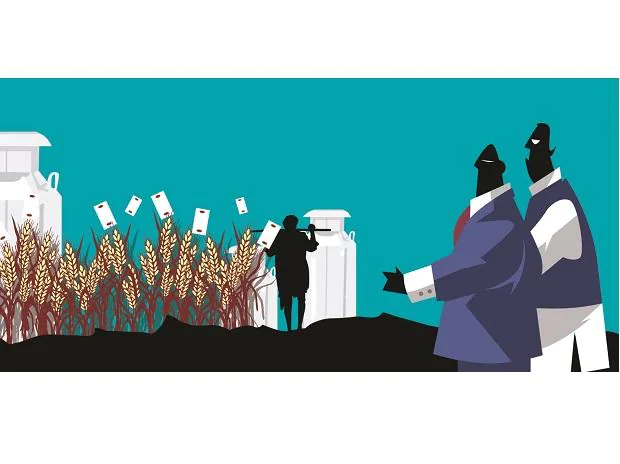
However, for India to sustain its progress, it should place inclusiveness at the heart of its policies and investments, and make sure that it has a win-win case for both urban and rural India. Taking along villages and facilitating rural India to contribute to nation-building is important, and ‘rural revitalization’ is the way forward. Rural revitalisation is about positively transforming rural areas for present and future generations and improving people’s quality of life and economic well-being. In the Indian context, it is about transforming agriculture & allied sectors, and ramping up modern amenities and services necessary that can improve the standard of living in villages.
Transforming agriculture & allied sector
Rural India largely depends on agriculture for employment. Agriculture, which accounts just for about 15% of the GDP, retains 45% of India’s workforce. And as per the latest round of the Periodic Labour Force Survey, the agricultural sector’s contribution to rural employment is nearly 60% in 2018-19. Also, CMIE (Centre for Monitoring Indian Economy) data from the consumer pyramid household survey shows the share of agriculture in total employment has gone up from 35.3% in 2017-18 to 36.1% in 2018-19 and then to 38% in 2019-20.
But this sector is battered by several structural issues. Over 80% of those engaged in agriculture are small and marginal farmers. The average land holding size has dwindled down to 0.512 hectares presently from 0.725 hectares in 2003.
Besides, the low yield has long been holding agriculture back. India’s rice yield, for instance, is 2191 kg/hectare, while the global average stands at 3026 kg/hectare, and wheat yield is 2750 kg/hectare, against the world average of 3289 kg/hectare. Adding to these challenges are rising input costs, growing farmer debt, eroding soil quality, pest menace, water scarcity, and extreme weather.
While technology is science-driven, its adoption is inevitable to solve many of these bottlenecks. A major thrust is required to pave the way for agriculture to be science driven, and technology inspired. Applications of cutting-edge science and high-end technology – from genetics to artificial intelligence, can result in immense productivity gains in agriculture.
Crop diversification is another imperative to save soil health, efficiency in water usage, and to make the most of changing consumer needs. Farmers can tap the growing demand for organic vegetables and fruits. Innovative market linkages, and thus higher price realisation, can serve as a great incentive for farmers to go for crop diversification and organic farming.
Promoting agro and food processing industries too can ensure income security for farmers in a big way. In India dairy farming, raising livestock, fisheries, horticulture, and herbal gardens have proven to be viable alternate sources of income for villagers. And there are tested cooperative and Public-Private Partnership (PPP) models in these areas. Efforts to replicate them elsewhere can pay rich dividends.
Improving amenities and services
India’s villages are increasingly becoming dense settlements with little or no planning. Semi-urbanised dense rural settlements are increasingly looking like slums. These villages can be developed as ‘smart villages’ (and towns) by setting up important public services, amenities, and infrastructure. Facilities in public roads, electricity, water and drainage system, waste management system, housing and public health need to be ensured for a holistic rural development.
Rural areas are left behind in crucial areas like education and healthcare. Opening higher education institutions and improving the government healthcare institutions in rural areas is necessary to improve accessibility, equity and affordability.
Rural revitalisation calls for a structured and multi-layered investment program created at least for the next 20 years to bring about transformation in agriculture, and infrastructure in rural India. Creating a virtuous cycle of growth, employment, savings, investment, and an increased standard of living in rural areas demands partnerships of many hues and colours. In education and healthcare, as in agriculture, Public Private Partnerships can have a positive impact. In the areas of market linkages and resource sharing, urban-rural partnerships are required.
If India can commit to rural revitalisation with necessary investment, involving local communities, rural India can prove that it has so much to contribute to the emerging development discourse in the country.

















